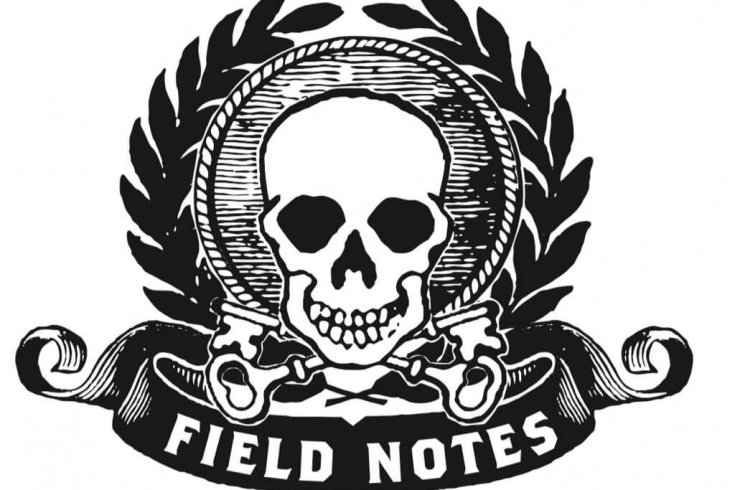faroe islands—Transit ads here feature a short, shaggy beast on a sunlit mountain road, with the accompanying slogan “It’s sheep and easy by bus.” But last March, as a shuttle dropped me off in the middle of a blizzard to make the ten-minute slog through knee-deep snow to my hostel, a different slogan came to mind: “Viking territory. No wimps allowed.”
If you know where the Faroes are, grab your broadsword and hit the alehouse, because most people don’t. These eighteen small, rocky islands in the north Atlantic, midway between Scotland and Iceland, are home to 48,000 people and twice as many woolly ruminants. Technically Danish subjects, Faroese have Viking ancestry, their own Old Norse-variant language, and a strong independence movement. I first discovered the islands through web videos by Týr, a mail-clad foursome who crank out ancient Faroese ballads, heavy-metal style. (While forcing Beowulf on my cegep students, I had emailed Týr’s singer and lead guitarist, Heri Joensen, to see if he’d answer class questions on the modern relevance of ancient stories. His reply: “We are honoured to be used for educational material.”) One video depicted mighty stone ruins and jagged, green-topped, sky-slicing cliffs dropping into churning surf. I had to go.
With a population of 18,000, Tórshavn is the Faroes’ largest town and claims to be Europe’s smallest capital. It feels both contemporary and out of time, with nightclubs and a shopping mall (complete with Burger King), but also traditional low, black-tarred houses with sod roofs—all tucked under the wide, wild Nordic sky. In the harbour, thick waving seaweed and the sea’s familiar smell remind me of family Christmases in British Columbia, but the lack of trees and the denuded landscape tell me that I am somewhere far away.
I slip through excessive spring snow to meet Heri at the overheated Café Natúr. Heri, who is in his early thirties, looks surprisingly boyish in a black turtleneck sweater, his long hair tied back. He asks how the trip has been. When I lament the previous night’s three drunkards singing “the white man marches on,” Heri looks out the window, shakes his head, and says, completely seriously, “They should be arrested.” Týr’s name is from the Norse god of both war and justice. But while there’s a fine tradition of Scandinavian metalheads burning down churches—and even rumours of a guitarist eating a band member’s brain—Týr is not part of it. In person Heri is hardly as grave as his sword-wielding persona, and Týr’s music, in fact, is not angry metal. Rather, Heri is a polite “Viking metal” warrior, his English lyrics quite formal, and Týr’s songs, mostly rooted in Norse mythology, point to the social importance of history. Their song “Hail to the Hammer” asks: “What will keep us warm in the winter? Tales of those who died, sword in hand in times gone by.”
The place of heroic stories in the community, and his own role as transmitter, are things Heri takes very seriously. For although Týr has been accused of “ruining” the national ballad, “Ormurin Langi” (Heri claims young people are now more familiar with Týr’s modernized version), popular culture is what kept the Faroese language alive for centuries. For more than 400 years, Danish was the official written language of the Faroe Islands, and Faroese was preserved mainly through songs and folktales.
But why Viking metal? Why myth in our modern age? “Is it because it’s your heritage?” I ask. Heri, who has been drinking only water, admits to liking the exaggeration, humour, and “macho” elements of Norse myths and sagas—a character in the ballad “Regin Smiður” “tears up large oak trunks, he maims some to Hel.” But then Heri says reflectively, “I think it has to do with the fall of Communism.” Communism felt in the Faroes? He believes world leaders needed a new enemy after the Cold War ended. And now, he says, the US government has targeted the Islamic world. Heri believes that people are uncomfortable and uncertain whom to trust and that popular interest in myth and legend—like The Lord of the Rings and the Harry Potter series—reflects society’s desire for clear moral codes, where good and evil are distinct, where bad guys are easily identified and usually defeated. The ideal. Hope.
Back home, I sent Heri a bilingual English/Anglo-Saxon copy of Beowulf. He replied: “I am now pondering over the likeness between the conjugation and vocabularies of Old Norse, Anglo-Saxon, and German.” A hobby etymologist, Heri is the thinking person’s metalhead and reflects Shakespeare’s idea that “life is bound with all the strength and armour of the mind.” Týr’s music offers listeners such mental girding through mythology’s heroic values, as in the positive song “Alive”: “Now sharpen your old axes, shine your armour and your sword of sight and sound. My warriors, let’s go down together, time will tell us whether we will do or die.” And Heri’s personal slogan? “Unite humanity. Unite metal.” Viking territory: no wimps indeed.




